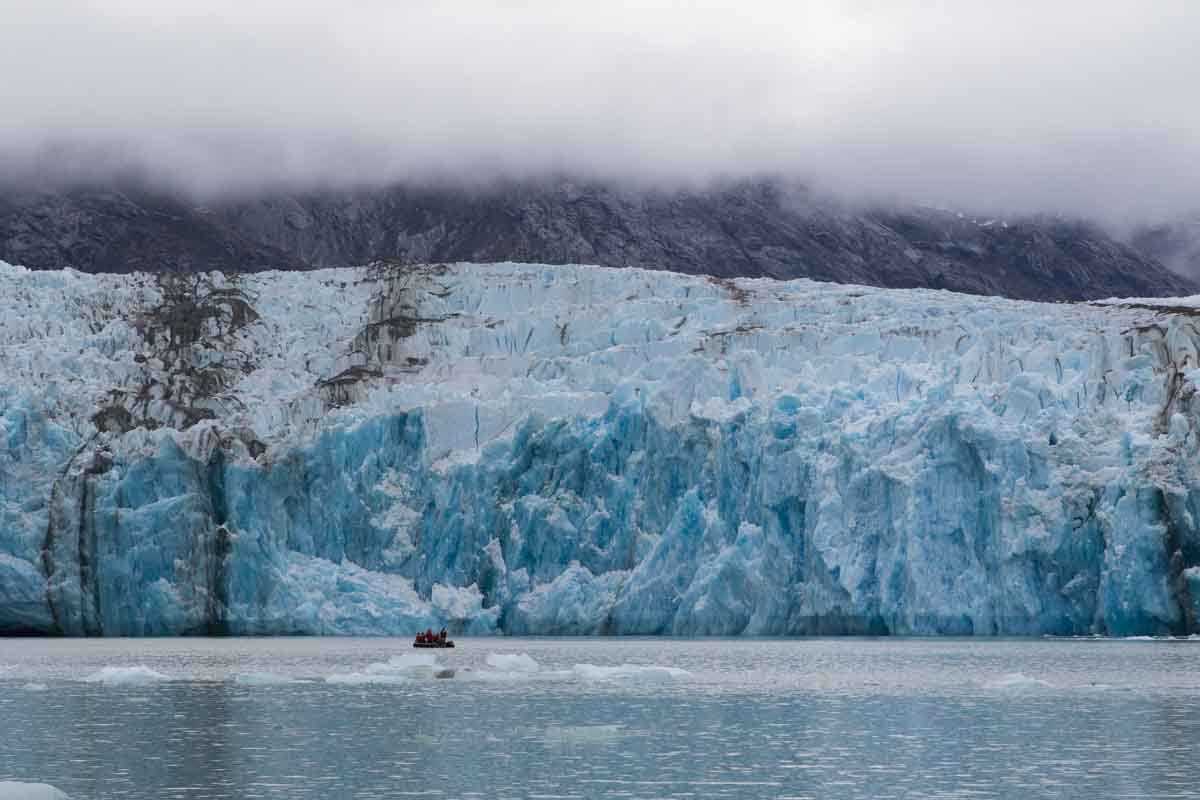This morning guests aboard National Geographic Sea Bird awoke to the tall walls and deep waters of Endicott Arm in the Tracy Arm-Fords Terror Wilderness. As we cruised the length of the 34-mile-long fjord we were awestruck by the epic beauty of our surrounds. Like a passage in time this journey from Seattle has now brought us to the glacial source and remnants of the Cordilleran ice sheet responsible for carving this incredible coastline. As we made our approach to Dawes Glacier we passed icebergs, growlers, bergy bits, and brash ice and you could hear the oxygen escaping from what once fell as a six-pointed snowflake full of O2. Exploring near the face in our expedition landing craft we saw harbor seals on ice, harbor porpoises, arctic terns in elegant flight, mountain goats on high and the occasional calving event that was followed by the sound of “white thunder.” Descending from the Stikine icefield this river of ice is one of the southernmost tidewater glaciers in the U.S. (the Le Conte being the southernmost) and like most glaciers in this area is experiencing some notable thinning.
As we left the inner sanctum of the fjord we made our way towards Holkham Bay and the terminal moraine where Dawes Glacier sat 1500 years ago. Combing the coast high and low we scanned for bears and goats. As we made our way towards Sumdum Island I spotted an unusual profile in the water. With closer inspection a moose was revealed with its unmistakable ears and muzzle. Our first moose sighting of the trip was quite exceptional as it swam the two-mile width of Endicott Arm. Further up the coast a brown bear was spotted grazing in a meadow, and not far from that individual another two brown bears. There was a noticeable size difference in the two and their behavior suggested courtship. One was obviously (by size) a healthy boar in hot pursuit of the female in estrus. The sow will be in estrus for 2+ weeks and the boar will follow her closely in hopes he can sow his seed during her induced ovulation (she will only ovulate after mating). It will be in his best genetic interest to stay with her for the duration of her estrus so that some other large male does not come and take his prize. While watching this incredible interaction humpbacks swam off the portside as common loons called! Between swimming moose, courting coastal brown bears, large baleen feeding humpbacks, and the call of the wild loon…the hour we spent before the moraine was the epitome of wild Alaska.
After dinner we pointed north up Stephens Passage for our long transit to Glacier Bay. Humpbacks at this point were just a distraction to the over 250 bald eagles that dotted shore and limb and the thousands of red throated and Pacific loons that took off upon our approach. Alaska is clearly living up to its reputation of wildness, wilderness, and awesome encounters!







